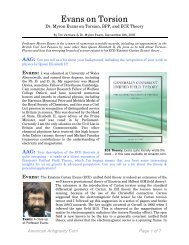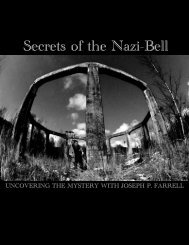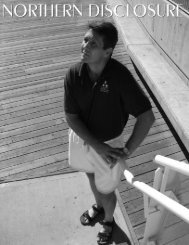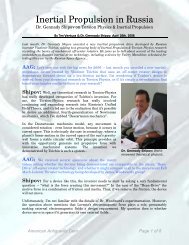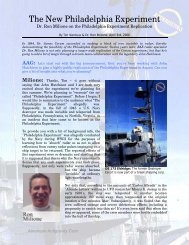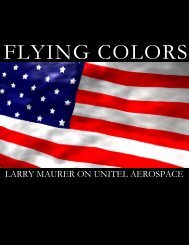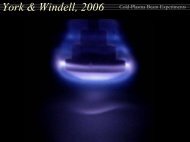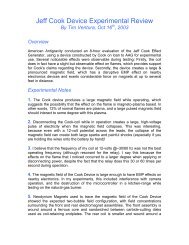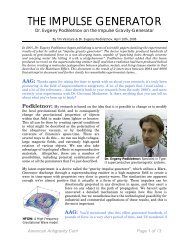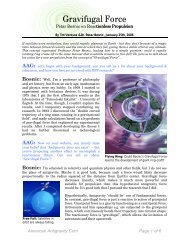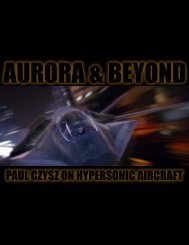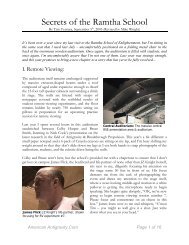A Conversation with Eric Davis - American Antigravity
A Conversation with Eric Davis - American Antigravity
A Conversation with Eric Davis - American Antigravity
- No tags were found...
You also want an ePaper? Increase the reach of your titles
YUMPU automatically turns print PDFs into web optimized ePapers that Google loves.
wanted to pursue this area professionally as a full-time career. But he said eventhen that industry and government was not fully funding this area of research forthe long-term.In 1989 I met <strong>with</strong> Bob at an AIAA conference and told him I had turned in myPh.D. dissertation and was waiting for my doctoral oral defense to be scheduled,and that I expected to soon be graduated and available for employment. He gaveme more bad news. There were no industry jobs left where I could do BPPresearch because of corporate retrenchment across the U.S. due to the beginningrecession and the fall of the Berlin Wall and communism in Russia created amove to cut down the DoD budget.So my potential career got derailed. I couldn't do postdoc work in myastrophysics discipline because that too was being affected by decisions in thefirst Bush Administration to cut down NASA spending on space exploration, ofwhich I was a part during my graduate work. With space science research fundingbeing cut, there were no forseeable postdoc positions available in areas I wasexperienced to work in.So I had to resort to teaching jobs at community colleges and universities to getby. In the mid-1990s I ended up traveling around Asia while working for the U.S.Air Force under contract through the University of Maryland.After my stint in Asia <strong>with</strong> the AF, I was recruited for a new job in Las Vegasworking as a research physicist at the National Inst. for Discovery Science. It isthere where I was first introduced to Dr. Hal Puthoff who served on the NIDSScience Advisory Board. However, it was because of my association <strong>with</strong> BobForward that I first became aware of Hal's scholarly physics journal publicationson ZPE research while I was in grad school since Bob was following Hal's workand reported on it in one of his later Air Force studies.Before I finished grad school, I got on the bandwagon of the 1985-89 researchdone and papers published by Kip Thorne and his students on traversablewormholes and time machines. In the 1990s when I was in S.Korea working for the Air Force and U.S. Forces Korea, I continued my researchinto that subject and later linked up <strong>with</strong> a black hole astrophysicist at KunsanNational University. Then things in the physics community really began to heatup when Paul J. Nahin's book "Time Machines", Matt Visser's book "LorentzianWormholes" and Kip Thorne's book "Black Holes & Time Warps" were published.These showed that wormholes, space warps and time machines had become amainstream cottage industry of research in physics. I began to hope that thebreathrough propulsion physics field would then take off and get the seriouslong-term funding it deserved.In 1997 the NASA-LeRC (now known as the John Glenn Research Center) andNASA-JPL began the official BPP program following the publication of thesebooks, and Hal was invited by the program manager at NASA-LeRC (Marc Millis)to join the effort. Hal liked my preliminary work on traversable wormholesbecause I showed him that aspects of the quantum vacuum zero-point energy can<strong>American</strong> <strong>Antigravity</strong>.Com Page 4 of 8



